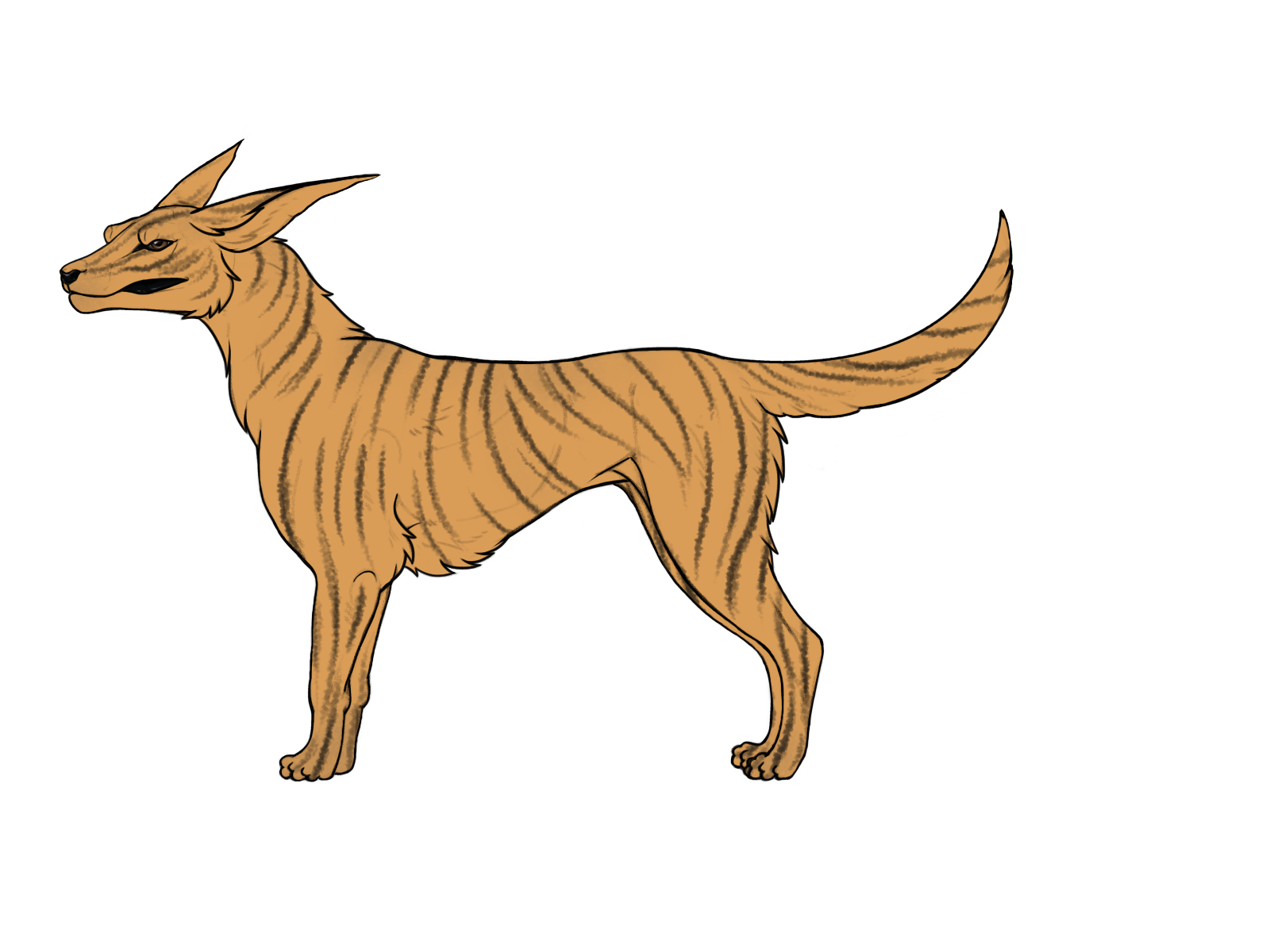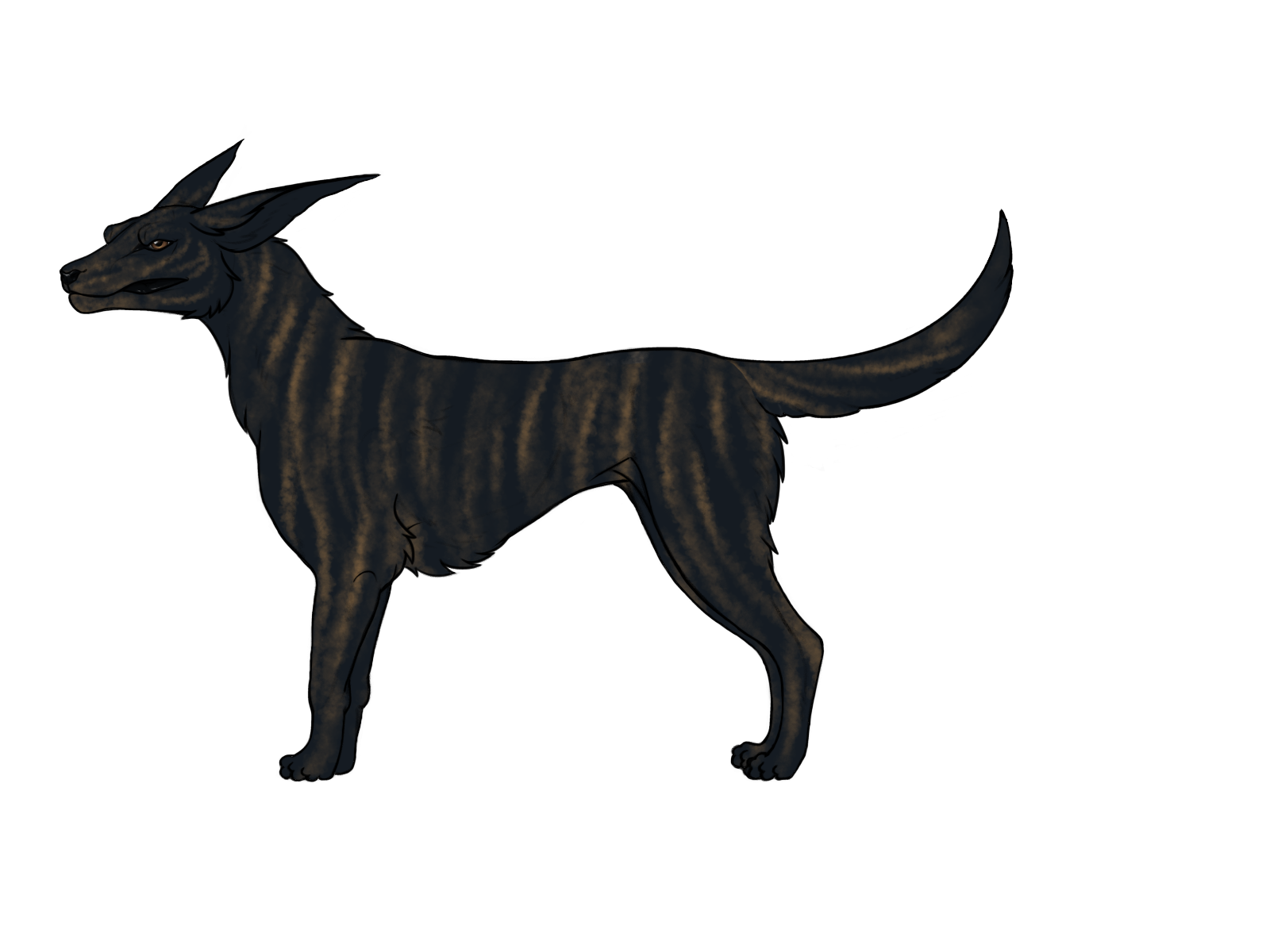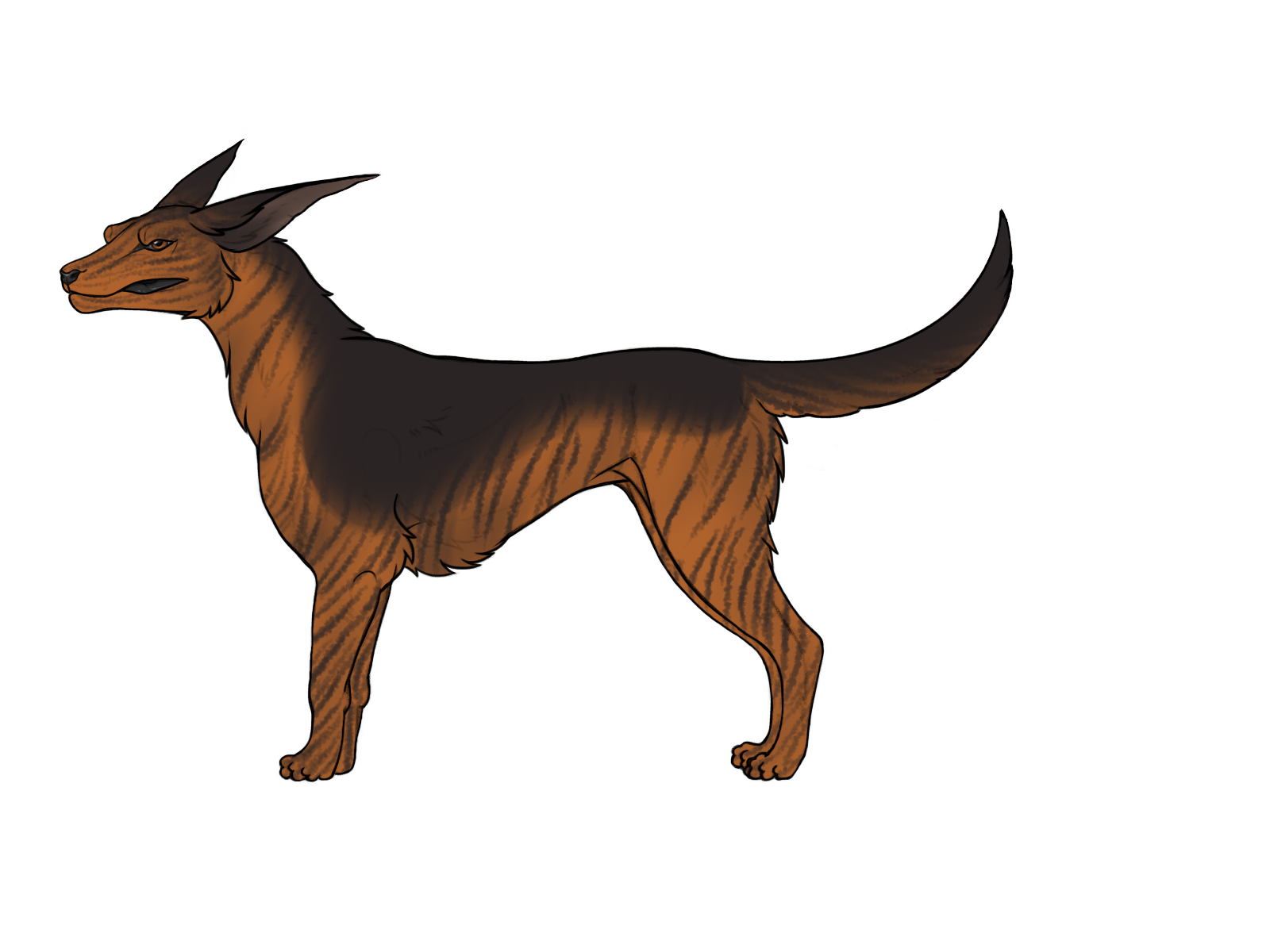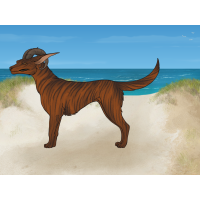
How to Design


Range
Minimum | Maximum | Dorsal Stripe
Edges
Soft | Blended | Grizzled

A brindle with average distribution.

A brindle with roughly minimum striping coverage.

A brindle with roughly maximum striping width and coverage.
Special Interactions
Brindle can interact with other patterns, specifically points, saddle and agouti. 
Point brindles have brindle only where the phaeomelanin point goes. Brindle in this region follows all normal brindle rules.

Saddle brindles have brindle only where the eumelanin saddle is not. This brindle follows all normal brindle rules.

Agouti brindle have brindle on the phaeomelanin undercoat, but it is most apparent in the trim area. Their brindle may be significantly more broken up and less clear than other brindles.
Examples
The hounds linked below are considered good examples of brindle.





